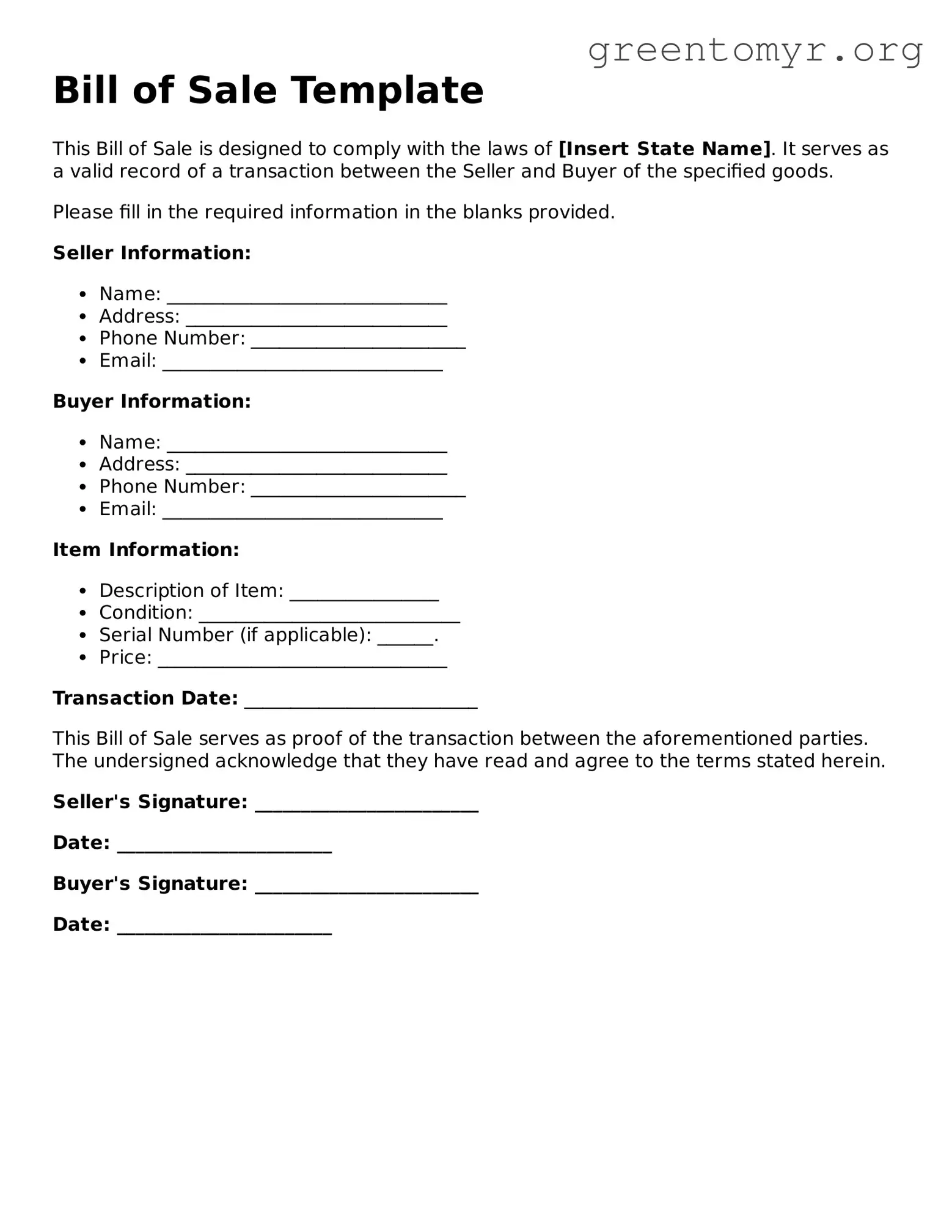What is a Bill of Sale?
A Bill of Sale is a legal document that records the transfer of ownership of an item from one person to another. It includes details about the buyer, seller, and the item being sold.
When do I need a Bill of Sale?
A Bill of Sale is often required during the sale of items like vehicles, boats, and personal property. It may be necessary when registering an item or when proof of purchase is needed for tax purposes.
What should be included in a Bill of Sale?
A Bill of Sale generally includes the following details:
-
The names and addresses of the buyer and seller
-
A description of the item being sold
-
The purchase price
-
The date of the transaction
-
Signatures of both parties
Is a Bill of Sale required for all transactions?
No, not all transactions require a Bill of Sale. However, for significant purchases or transfers, especially involving vehicles or real property, having one is advisable for protection and record-keeping.
Can I create my own Bill of Sale?
Yes, you can create your own Bill of Sale. Just be sure to include all necessary details and ensure it is signed by both parties. Templates are also available online for convenience.
Do I need a witness or notary for a Bill of Sale?
In many cases, a witness or notary is not required. However, having a notary can add an extra layer of legitimacy and is recommended for high-value transactions.
What happens if I lose my Bill of Sale?
If you lose a Bill of Sale, it may be challenging to prove ownership. If possible, contact the other party to recreate the document. Keeping a copy in a safe place in the future is a wise idea.
How can a Bill of Sale protect me?
A Bill of Sale protects both the buyer and seller. It serves as evidence of the transaction, outlines the terms, and can protect against disputes later on. It can clarify conditions like warranties or "as-is" sales.
Are there different types of Bills of Sale?
Yes, different types of Bills of Sale exist based on the item sold, such as:
-
Vehicle Bill of Sale
-
Boat Bill of Sale
-
Personal Property Bill of Sale
You can find Bill of Sale forms online. State government websites sometimes provide specific forms tailored to your needs. Local office supply stores may also offer blank forms.
